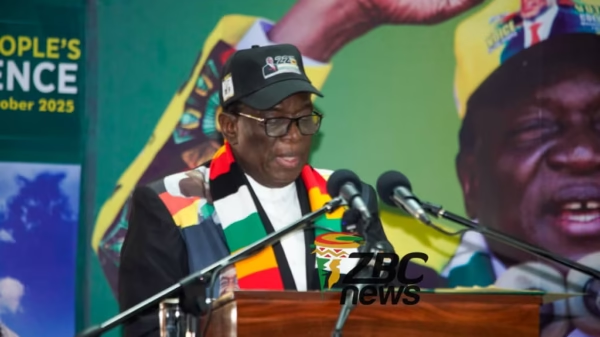Reserve Bank of Zimbabwe (RBZ) Governor John Mushayavanhu has linked the recent sharp decline in the newly introduced Zimbabwe Gold (ZiG) currency to a limited number of foreign currency sellers operating under the current willing-buyer, willing-seller exchange system.
In a recent interview with The Sunday Mail, Mushayavanhu explained that the adjustment of the official exchange rate was a response to temporary pressures not reflective of the country’s economic fundamentals. He noted that an artificial surge in demand for foreign currency, coupled with inflationary pressures, prompted this change.
On September 27, the RBZ set the new official exchange rate at ZiG24.3 per US$1, a substantial increase from the prior rate of approximately ZiG14.1 per US$1. Mushayavanhu stated:
The interbank foreign exchange market under the willing-buyer, willing-seller arrangement allows market forces to dictate the exchange rate, while the ZiG’s backing by gold and other reserves is crucial for minimizing exchange rate volatility caused by temporary supply-demand shocks.
However, the multi-currency system poses challenges, as there are few foreign currency sellers, creating a buyers’ market. Foreign currency generators can choose to settle domestic transactions in foreign currency, which reduces their incentive to convert it.
The RBZ can intervene when temporary exchange rate pressures arise that are not linked to economic fundamentals, yet it also allows the exchange rate to adjust according to market conditions. This approach was emphasized in the April 2024 Monetary Policy Statement.
ALSO READ: Cape Town Police Nab Suspect with Drugs Worth R5 Million
Mushayavanhu further explained that the value of the ZiG is intended to reflect movements in reserve assets, like gold, as well as the inflation differential between the ZiG and the US dollar. He added:
The structured currency’s underlying value is meant to mimic the fluctuations of the reserve assets backing it and the inflation differences. According to the April 2024 Monetary Policy Statement, the intervening exchange rate will be influenced by inflation differentials between the ZiG and the USD, along with the price movements of the precious minerals held in reserves.
Although gold prices have been rising, which could suggest an appreciation of the gold-backed exchange rate, the country is experiencing increased inflation, as shown by a month-on-month inflation rate of 1.4% in August 2024 and 5.8% in September 2024, counteracting the gains from rising gold prices.
This situation highlights the necessity for a price discovery mechanism to align the exchange rate with the macroeconomic factors influencing the structured currency.
Mushayavanhu indicated that the exchange rate movement is expected to help absorb shocks from excess liquidity in the economy, which would help stabilize inflation expectations and reduce inflation differentials moving forward.
Additionally, he noted that a recent US$110 million injection by the central bank has been vital for sustaining economic activity. This influx has addressed backlogged demand at banks, ensuring essential imports could still be financed despite limited currency availability. This intervention has played a key role in maintaining a stable supply of goods during a drought worsened by El Niño weather conditions.
The ZiG is supported by the value of precious minerals, particularly gold, as well as foreign currency reserves held by the RBZ.

For comments, Feedback and Opinions do get in touch with our editor on WhatsApp: +44 7949 297606.









































